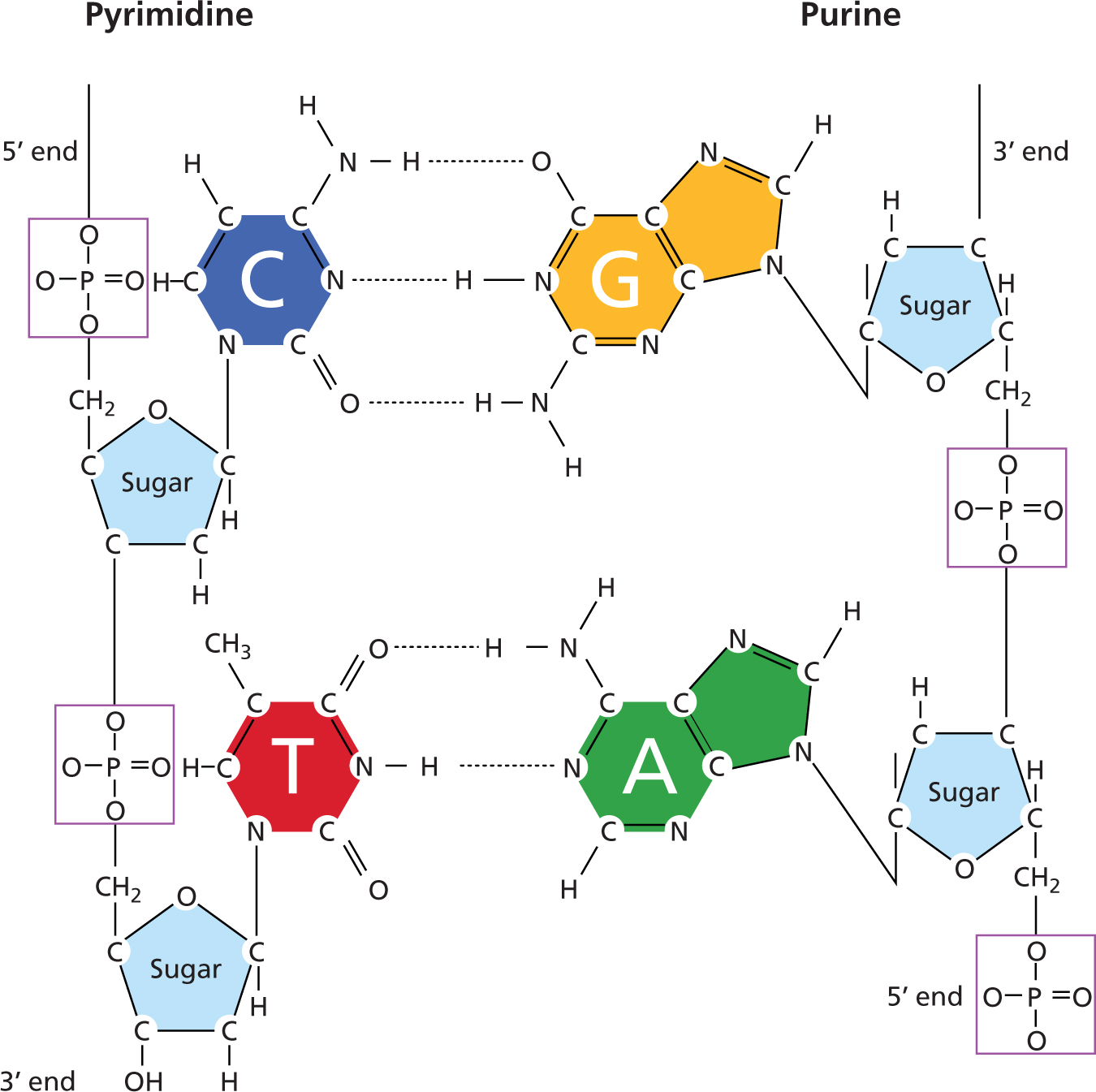
Detailed structure of Deoxyribonucleic
Acid (DNA)
DNA
is a double-stranded molecule with base
pairs inside, held together by hydrogen
bonds. Each outer strand has a 5'->3' directionality,
determined by the numbering of the deoxyribose sugar.
Successive sugars are joined by a 3'-5' phospho-diester
bond. The 5'
terminus of the strand is also called the phosphate end,
and the -OH group on the 3' terminus the
hydroxyl end. The 5'->3'
orientation of the two strands runs in opposite
directions. Bases are attached
to the 1' carbon. There are four bases, A C
G & T (the color convention is
that used in automated DNA sequencers). C
& T are single-ring pyrimidines, A
& G are double-ring purines. C
& G pair by means of three hydrogen
bonds, A & T by means of two bonds.
Either base pair therefore comprises three rings, and have
the same molecular shape. This allows base pairs to occur
between the strands in any order: the sequence is aperiodic.
If the strands are separated, the base pair rules mean that
the strands are complementary, and either
single-strand contains the information present in
the double-stranded molecule.